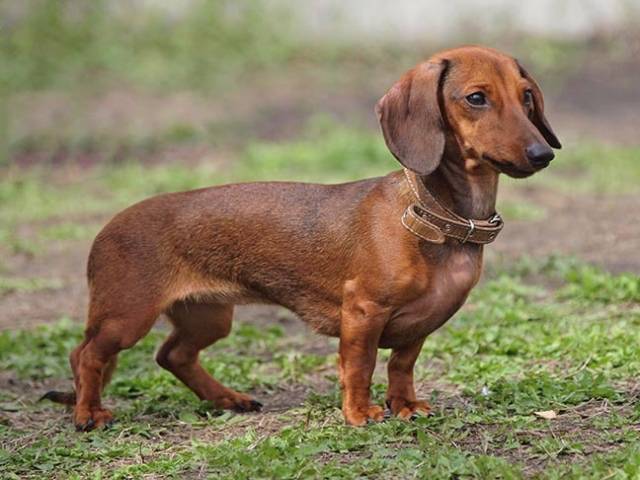The dachshund is an energetic, lovable dog breed with an endearing personality. Known affectionately as the doxie, wiener dog, hotdog, or sausage dog, this breed of short stature leaves a lasting impression. The dachshund can be a loving companion, lapdog, and even a family dog. Despite its size, the dachshund tends to be quite protective and alert, so the breed can also make an excellent watchdog.
Dachshund Dog Breed Information
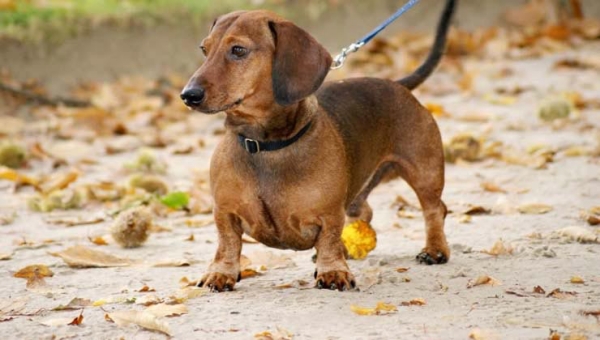
Group: Hound
Height: 8 to 9 inches (standard); 5 to 6 inches (miniature)
Weight: 16 to 32 pounds (standard); up to 11 pounds (miniature)
Coat and Color: Coat varieties include smooth (shorthaired), longhaired, and wire-haired. Colors include (but not limited to) black, tan, fawn, beige, blue, chocolate, and red with various markings such as dapple, piebald, brindle, and sable.
History
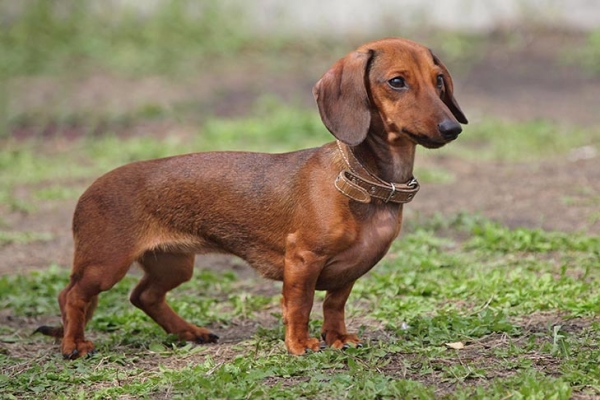
The dachshund originated in Germany as a hunting dog. Though its origins can be traced as far back as the 15th century, the breed’s development really began in 17th century Germany. Called dachshunds, which translates as “badger dogs,” these short hounds did just that—they hunted badgers. Their short legs, loose skin, big chests, determination, and independence were ideal for digging, entering tunnels, and of course, fighting badgers. Their flap-down ears help keep dirt and debris out when burrowing.
Dachshunds were brought to the U.S. as early as 1885, when the breed was recognized by the American Kennel Club (AKC), but increased in popularity in the 1930s and 1940s. To prevent them from being ostracized during World War II, they were temporarily called badger dogs in the U.S. They remain extremely popular dogs to this day.
Dachshund dog breed information
Appearance
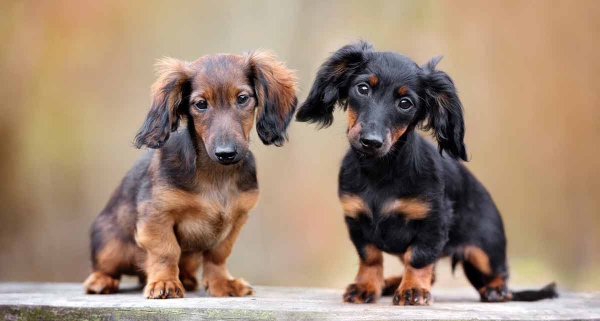
Dachshunds show a wide variety of coloring: black and tan, black and cream, red, blue and cream, fawn and cream, solid black, fawn, chocolate, and red (to name just a few). Dachshund markings include brindle, dapple, double dapple, piebald, brindle piebald, and sable. Dachshund hair can be smooth and short, long, or wiry.
They also show a difference in temperament based on the characteristics of their coat. Because the wire-haired Dachshunds have terrier in their lineage, they’re often less calm than their long-haired cousins, who are the quietest and calmest of the three types.
Feisty, Loyal and Playful
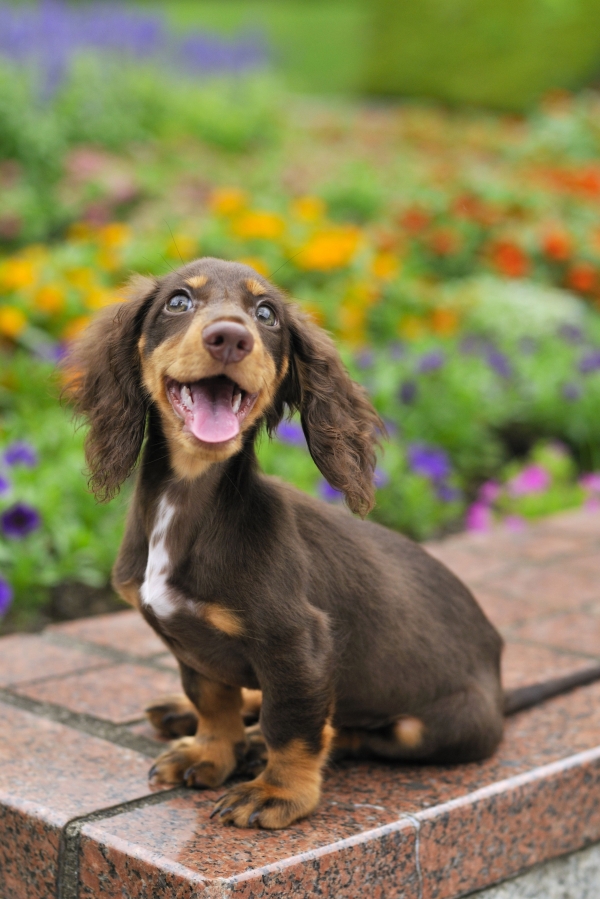
Playful, feisty, stubborn, fond of cuddling…this little dog is a mixed bag. If trained well, Dachshunds can make excellent companions, steadfast family dogs, and even therapy dogs. If not, they can be overwhelming and a little difficult to control.
Ideal Pet Parent for a Dachshund
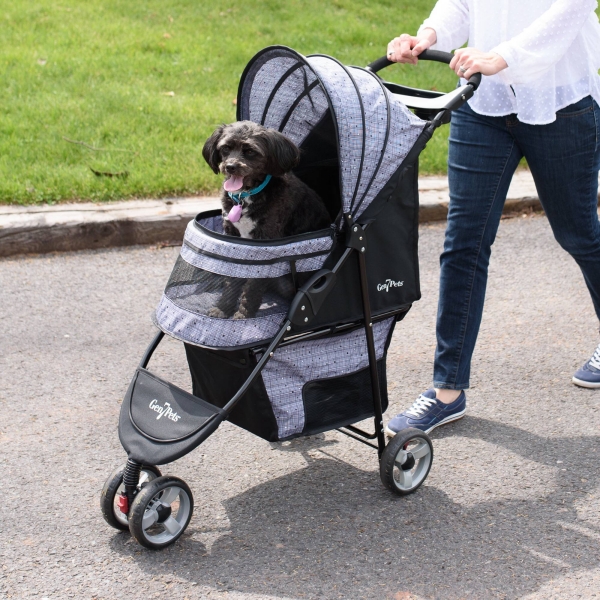
Dachshund dogs love apartment life. Because of their small size, they don’t need a backyard, but they do enjoy going on walks outside. Dachshunds also love a challenge, and as long as you incorporate plenty of opportunities to chase and find things, you’ll have a happy dog.
These dogs love their human parents, and really don’t want them to leave. Your dog may struggle more with separation anxiety, and when they’re missing you, they’re likely to chew. When you do leave your home without your dog, you may want to use a kennel.
Training is Key
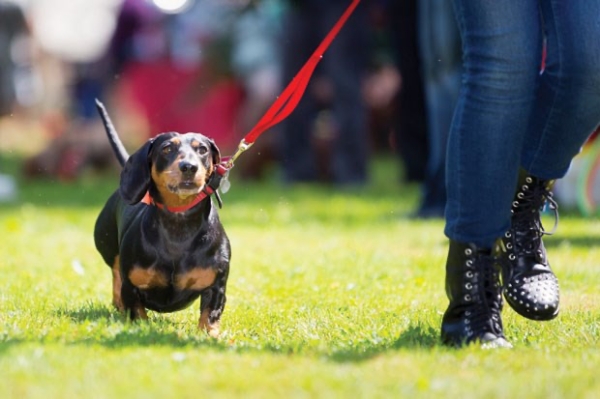
Like many small dogs, these are prone to show aggression toward strangers and other dogs, and a loud bark can make the process of training a bit more complicated. Families with small children should only get a Dachshund if they are committed to consistent training and regular socialization as they are more likely than other dogs to bite their owners.
Dachshunds are intelligent, independent, and playful, but can also be mischievous and stubborn. They aren’t the easiest of breeds to train. If you need help teaching your dog, you may want to consider investing in a trainer.
Ideal Environment
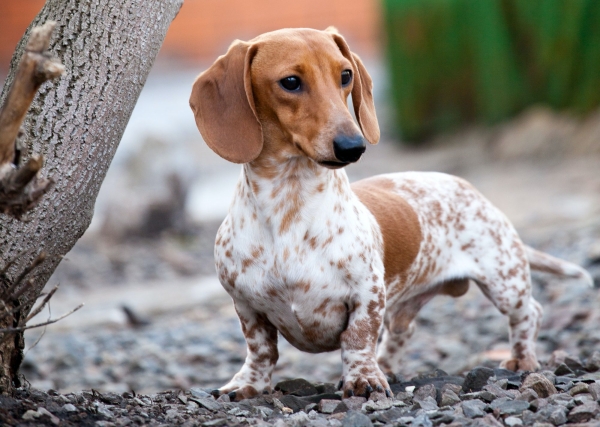
Dachshund dogs love apartment life. Because of their small size, they don’t need a backyard, but they do enjoy going on walks outside. Dachshunds also love a challenge, and as long as you incorporate plenty of opportunities to chase and find things, you’ll have a happy dog.
Dachshunds love their human parents, and really don’t want them to leave. Your dog may struggle more with separation anxiety, and when they’re missing you, they’re likely to chew. When you do leave your home without your dog, you may want to use a kennel.
Grooming
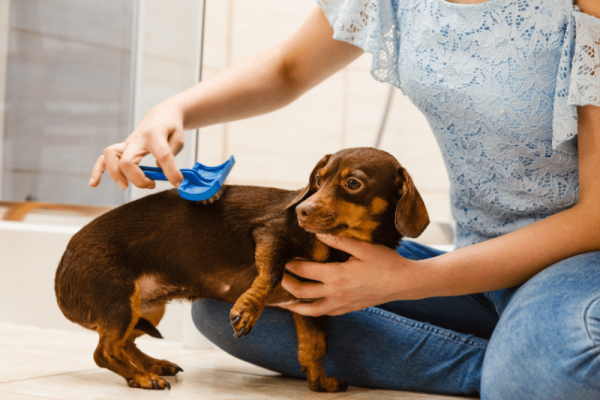
These beloved dogs are low-maintenance pups that don’t shed too much or need too many baths. But depending on their coat type (smooth, wire-hair, or long hair), there’ll be different amounts of grooming needed.
Long-haired Dachshunds need the most frequent grooming of all, while smooth Dachshunds only need a simple wipe down with a cloth between baths. Wire-haired Dachshunds will need regular brushing (every two days should be enough), and twice per year, they’ll need their coats stripped with a special brush.
Dachshund Dog Breed Information
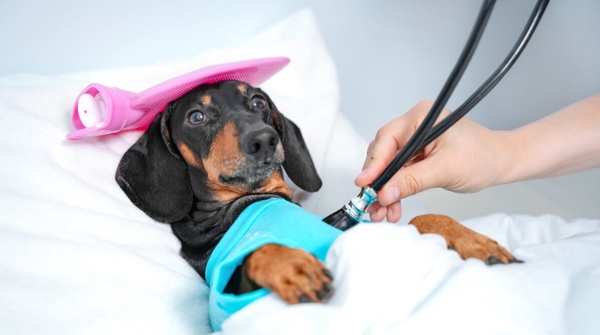
Like many dog breeds, this breed comes with a tendency toward particular health issues. Dachshunds are more likely to experience epilepsy, granulomatous meningoencephalitis, Cushing’s syndrome, thyroid and autoimmune issues, and various eye defects. Double dapple dogs are more prone to hearing and vision problems.
Most importantly, however, the dog breed is prone to back problems, such as slipped or herniated disks due to their elongated back, and intervertebral disc disease (IVDD). A significant portion will develop IVDD, so it’s important to care for your dog with their spine in mind.
Getting a Dachshund

Finding a Dachshund puppy or adult dog can be as easy as an internet search, but be careful of puppy mills and internet scams. There are many ways to find a reputable breeder, and it’s important to ask around, visit before committing to payment, and trust your gut. Plus, there are many Dachshunds available from rescue organizations and shelters.
Dachshund Breeders

You can use the American Kennel Club (AKC) search tool to find a reputable doxie breeder near you. It’s important to research and check references in order to avoid puppy mills and online scams. When you find a reputable breeder, be sure to ask questions, and make arrangements to meet the parent dogs or mother in person. When you visit, ask about any health issues in the dog’s bloodline.
